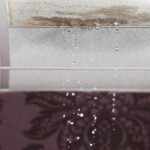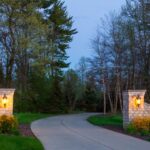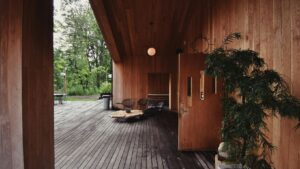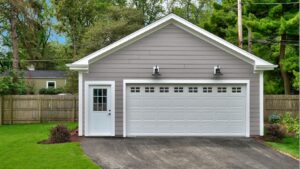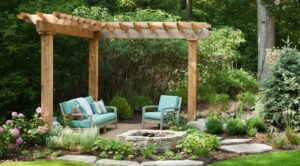
The castle has been a cornerstone of European culture for centuries, and there are many different types of castles. Whether you’re interested in castles that are perfect for shooting movies, pictures or locations for your next fairytale, we’ve collected a few of our favorite castles.
Today, we are not going to talk about the types of castles that we can see today, but we are going to explain what type of castles we usually think when we think about castles. Some of you may know that England was once the home of the most powerful, and dangerous castles in the world.
If you are on the hunt for the perfect castle, chances are you’ve done a lot of searching, and you’ve probably come up with a checklist of the qualities you want and don’t want in the perfect castle. One of the most important things to consider is the castle’s function. Is it primarily a place for entertaining or a place for living? Is it for simple living, or is it for a more expensive and elaborate lifestyle?. Read more about different types of castles around the world and let us know what you think.
For the aristocratic class, such as kings and lords, a castle was basically a fortified private residence.
Castles may be found in a variety of styles and locations throughout the globe. The European-style ones, on the other hand, are perhaps the most well-known. They were quite prevalent, especially throughout the Middle Ages. In this post, we’ll look at many kinds of castles from antiquity to the present day.
Parts of a Castle are similar.
Castles from the Middle Ages
The Middle Ages were a time when castles were being built all across Europe and the Middle East. They were constructed between the 9th and 15th centuries and varied in size from simple timber constructions to massive stone complexes.
The majority of medieval castles were built on high ground or near important features like river crossings or mountain routes. Their main function was to give the nobles control over the surrounding countryside. They were also formidable fortifications that protected the noble family and their valuable belongings.
The size of a castle was, of course, a sign of power and prestige. As medieval castles grew in size and complexity, they necessitated the use of trained teams of master artisans to construct them. Stonemasons, blacksmiths, carpenters, architects, and other professionals labored for years to build a single castle at a hefty price.
A Medieval Castle’s Structure
Simple constructions were used in the early stages of the medieval castle. As invasions grew more common and the necessity to protect territories became more important, builders added additional security measures to the castle, making it more military.
A moat, barbican, curtain walls and towers, fortified gatehouse, keep, and bailey were all common features of medieval castles.
The moat is a man-made ditch that surrounds the castle. It was built to be deep, and in certain cases, it was even filled with water. It was a defensive tactic and a way of slowing down invading forces.
The barbican protects a castle gate or bridge. It’s typically a tower or a section of wall built to defend the castle’s outer entrance.
The curtain walls of the castle encircle its whole circumference. To enhance their resistance to firearms and other projectiles, they are robust and reinforced with stone and debris. Curtain walls of different thicknesses were built. Some of them were thick enough to have tiny passageways running through them. The curtain walls are tall and occasionally slanted to make them more difficult to climb.
Castle towers may be found at different intervals throughout the curtain wall’s length. Intruders attempting to breach the walls would be shot down by guards stationed in the tower structures.
Fortified gatehouses were the usual method of defending the castle’s main gate, which was one of its most vulnerable locations. Two towers were usually built on each side of the gate as part of the defense. The gate is constructed of strong and heavy wood and is strengthened by a movable grid made of metal and additional wood, which is placed deep between the towers. By lowering the grid over the gate, guards might deter an assault.
The keep is a highly fortified structure with several floors and narrow stairs that is considered the safest location in the castle. If invaders penetrated the rest of the castle during an invasion, castle occupants would flee to the keep as a final option. As a result, the keep had additional security features. It was built on the highest point of the castle to make it difficult to reach. It featured strong walls and highly guarded entrances as well.
The bailey, or inner courtyard, of the castle was a hive of activity, typically including multiple buildings, workshops, granaries and storage, food gardens, and room for household animals and cattle. The bailey contained additional dwellings in larger castles.
Styles of Castles
Over a thousand years, the four major castle styles — motte and bailey, shell keep, stone keep, and concentric – developed. Although castles were ultimately phased out, the royal palaces that followed are seen to be the contemporary counterpart.
Motte and Bailey are a couple.
The motte and bailey is often regarded as Europe’s earliest castle style. The name of the castle is derived from two Norman French words: motte, which refers to a high mound or clump of soil, and bailey, which refers to enclosed territory.
During the 10th century, motte and bailey castles were common in Northern Europe. They may be found all across France and the Holy Roman Empire. When the Normans conquered England after the Battle of Hastings in 1066, they brought the castle design with them. Architects rapidly embraced the design, and it spread across the area as a result of the structure’s robustness and simplicity.
Motte and bailey castles were simple to build and utilized resources such as wood and stone that could be readily obtained from the surrounding areas. The motte was built from a mound of dirt that had been leveled at the top. It had a diameter of 100 to 300 feet and a height of 10 to 100 feet. As a precaution, a trench was constructed around the motte. The tower keep, which was built on top of the motte and surrounded by a wall, contained the castle’s residential quarters in its upper levels. Both the keep and the walls of early motte and bailey castles were made of wood. They were often wrapped in skins and hides to make it more difficult for them to be set on fire during an assault.
The circular bailey would lie outside the keep’s walls and under the motte. It would include structures such as a hall, kitchen, stables, and workshops. A ditch was constructed around the bailey, which linked up with the smaller motte ditch to form a figure eight settlement.
The motte and bailey style was simple in comparison to subsequent fortresses. Nonetheless, motte and bailey castles are fascinating due to the diversity of architectural styles. Some featured more than one bailey or motte, as well as a keep on stilts or water-filled double-ditches. The surrounding environment also contributed to the uniqueness of each design.
Many of the physical buildings of motte and bailey castles are no longer standing due to the fact that they were built of wood. And the mottes are often mistook for nothing more than a hill in the countryside with a beautiful outlook. Archaeological investigations, on the other hand, have unearthed foundations and relics that show what may have previously existed on the site. The Granard Motte and Bailey, Ireland’s tallest motte at 534 feet above sea level, is an outstanding example.
The prominence of motte and bailey castles began to decline by the 12th century.
Keep Shells
The security and strength of motte and bailey buildings were improved by Shell keep castles. A shell keep castle would be built inside the existing motte tower’s walls, essentially encasing the wood tower in stone. The benefit of building a shell keep this manner was that the castle didn’t have to be rebuilt from the ground up and could continue to operate normally. It was also less costly to construct a shell than it was to construct the fortress completely of stone.
The round form of a shell keep castle was typically the same as the motte keep it encircled, although it wasn’t the only way they were built. They may be polygonal or oval in form. Despite the fact that the goal was to make the castle stronger, the stone covering couldn’t be too thick or heavy, or the motte would collapse, particularly if the motte was artificial and composed of nothing but compacted dirt.
Because of the danger of a motte collapsing beneath the weight of a stone structure, even if it was only a thin shell, the popularity of shell has always been fleeting. Only a handful were ever constructed. By the 1200s, castle builders had completely abandoned the shell keep in favor of massive all-stone structures.
When you go to a shell keep nowadays, you’ll typically just see the outside stone ring of the structure since the inner wood components have been destroyed by time. Clifford’s Tower, atop a high hill in North Yorkshire, England, is an example of a shell keep that is still intact today. The fortress, which is part of York Castle, was constructed for William the Conqueror in 1068. The keep’s two-story architecture and other historical features may be observed, despite the fact that it is mostly a ruin.
Keep the Stones
The image that springs to mind when someone mentions “castle” is of a stone keep. When some of the disadvantages of motte and bailey designs – rotting wood, extensive upkeep, and susceptibility to fire – made them more unattractive, the stone keep form became the dominant castle type around the 11th century.
Stone keep castles were designed to endure. Some, in fact, have survived for hundreds of years. The entrance of the fortress was many feet above the ground. Thus could only be reached by ladder or bridge, and it acted as a deterrent to attackers, making the tower very safe. The keep of the castle was towering and intimidating, providing the ruler with a commanding perspective of his realm. They were considerably more costly to construct than shell keeps and served as a status symbol.
If you want to see what a genuine castle looks like, stone keep castles are a great place to go. The White Tower of the Tower of London is one of the most renowned stone keep castles.
Keep a Square Stone
Stone keep castles were often built in a square shape with four towers at each corner linked by strong stone walls. The keep’s walls were very thick, reaching up to 9 feet in thickness.
Stone keeps, however, had a weakness in their construction that rendered them rather weak. Because the castle was constructed in the form of a square, attackers might dig a hole under one of its corners and wait for a section of it to collapse if they were near enough. The castle may be overrun and seized this way. Also, the castle’s rocky fortifications couldn’t protect its occupants from attackers who would surround it for weeks at a time, waiting for the residents to surrender when they ran out of food.
Keep a Round Stone Keep
The Juliet is another name for the circular keep castle. The round keep was designed to achieve an ideal balance between the square stone and shell keep. The circular stone keep was built in the same way as the square stone keep, but it was less costly to build since it had fewer chambers and stairs. Although having fewer rooms may seem to be a disadvantage, by the time round keep castles became the standard, the castle’s residential accommodations were often located in other structures on the grounds. Round stone keeps were primarily used for defense, and they were effective. The circular construction provided archers with a 360-degree view, allowing them to shoot possible threats without being obstructed by corners.
In addition, a circular stone keep was more durable than a square keep. The structure was not as susceptible to a projectile attack or mine targeting a corner as a square keep was. Rather than utilizing a wood roof, as was usual with square stone holds, round stone keeps may be further reinforced with a domed vault.
A basement level for storage was common in round keep castles, with two or three levels above. The Coucy Château in France, which rises at 180 feet, is the world’s highest circular stone keep.
Castles with a Concentric Shape
The need for castles that could resist an attack grew as weapons got more powerful. Around the 13th century, the concentric fortress was built, coinciding with the advent of gunpowder in Europe. It wasn’t just a battering ram heading for the castle walls anymore; it was cannons, which had much more force and could inflict far more damage.
Concentric castles used a more advanced defensive technique than previous castle designs. They had two or more perimeter walls, as well as many reinforced gateposts that attackers would have to break to get to the castle’s keep. The job of besieging the keep was not simple. The curtain walls, or tiers of barriers, were built for maximum deception. Through the main gate, an invading force may be able to gain access. However, once inside the first bailey, they would discover that they would have to traverse the length of the castle to reach the second gatepost, which was cleverly placed on the other end. Making this bridge was risky since the opposing force would be waiting to attack them.
Furthermore, the circular castle’s outside walls were shorter than the inner walls. As assailants approached, guards stationed on the outside walls would shoot back. Plus, archers stationed at the tops of the inner walls would be able to see them and shoot at them.
Beaumaris in Wales is regarded as the ideal example of a circular castle, with four concentric rings, a water-filled moat, and an outstanding symmetrical architecture. King Edward I’s home, Beaumaris, was constructed about 1284 but never completed. Caerphilly Fortress, located in Wales, is another concentric-style castle. It took almost a decade to construct.
Castles were huge, monstrous stone constructions that valued protection above everything else at the time concentric castles became popular. Despite the fact that the castles still housed families, large sections of them were devoted to fortification.
From castles to royal palaces, there’s something for everyone.
The collapse of the feudal system and the emergence of monarchies coincided with the conclusion of Europe’s Hundred Years War and the ending of the medieval period. Domestic battles were no longer fought over territory, and the necessity to defend kingdoms and fiefdoms had passed. Castles transformed from military strongholds to elegant residences, ushering in the era of the royal palace.
Grand homes have made a return after falling out of favor for a time. These weren’t the old stone structures, which were chilly and wet; instead, they were intended to be pleasant, attractive, and elegant. They were places of relaxation and luxury where dignitaries might be hosted at extravagant feasts. The new palaces were an unambiguous display of aristocracy, money, and position, often adorned with costly art, contemporary conveniences, and the newest technology of the day.
The ancient castles’ high and multi-layered defensive walls, keeps, and baileys were no longer there. Huge gardens, with sweeping groomed lawns, fountains, and even large labyrinths, were popular in early modern palaces. The royal structures also featured bigger windows, allowing for more light and air in the chambers.
Look no farther than the Versailles Palace in France to witness the complete grandeur of a palace on display, which served as the French monarchy’s primary home until the Revolution. Work on converting an existing building, which consisted of a modest and basic hunting lodge encircled by a moat, into one of the world’s most renowned and magnificent palaces, started in 1661. The palace has opulent apartments, big rooms and banquet halls, a grand canal, and beautiful gardens, all of which are lavishly adorned with marbles, precious metals, and artistic treasures. It is the polar opposite of the modest and rustic motte and bailey castle!
When I was a kid, I used to build castles out of blocks. Sometimes they were great, and sometimes they were pretty bad. My favorite castles were the ones I built in the back yard, but I would have loved to have seen what my city blocks could make. Now that I have grandchildren, I get to build real castles for them.. Read more about stone keep castles and let us know what you think.
Frequently Asked Questions
What are the different types of castles?
There are three different types of castles in Beat Saber. The first is the castle that you start out with, which is a small castle on a platform. The second type is the large red castle that has two levels and can be reached by jumping off of the top level or climbing up from below. The third type is the floating green castle that floats around and cannot be reached by jumping.
Were there different types of castles and how did they evolve?
There were many different types of castles. Some of them were made from stone, while others were made from wood. The first type was the most common and is called a motte-and-bailey castle. It was built by the Normans in England in 1066 and consisted of a large mound surrounded by a ditch that had an entrance gatehouse on top.
What are the 4 types of castles?
There are 4 types of castles in Beat Saber. They are the Castle, the Ice Castle, the Space Castle, and the Volcano Castle.
Which building is the most photographed castle in the world?
The most photographed castle in the world is without a doubt the Neuschwanstein Castle. It is located near the city of Füssen in southwest Bavaria, Germany. The palace was commissioned by Ludwig II of Bavaria as a retreat and as an homage to Richard Wagner.
The castle was constructed from 1869 to 1886 and is now open to the public.
Luminar AI is a photo editing software that uses AI to create stunning castle images with just a few clicks. It comes with a range of presets that you can use to edit your photos.
Related Tags
This article broadly covered the following related topics:
- 8 types of castles
- types of castles
- castle designs
- different types of castles around the world
- castle architecture styles










